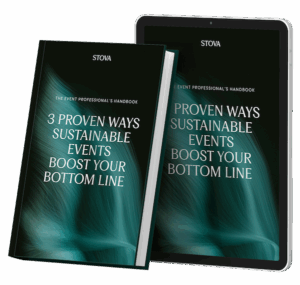Facial Recognition: The Ticket for Your Next Event
August 21, 2019
Facial recognition technology is no longer a thing of the future. Today, people use facial recognition to tag their friends in photos on Facebook, unlock their smartphones, or pass through airport security. Because people are using facial recognition daily, according to the MESE, event attendees are beginning to expect this technology at meetings and events. Don’t know how to incorporate this technology into your next event? We have you covered. Check out our guide.
What exactly is facial recognition technology?
Facial recognition technology is a biometric software that mathematically stores an individual’s facial features. This allows the technology to identify a person in live video or digital images without any other information. Essentially, your facial features in facial recognition technology is like your digital fingerprint. This fingerprint can also be used to categorize you based on your gender, age, ethnicity, or behavior.
How can facial recognition technology be used in events?
1. Event Check-in
Leave registration booths, barcodes, and name searching in the past. Instead, let the faces of your attendees do the work.
You can now use facial recognition technology to identify and register attendees at your event. With self-check-in booths, face-based registration will check-in your attendees and print their badge in about nine seconds. Not only do self-check-in booths save you labor costs, the check-in is actually more secure. Case studies have found that face-based registration checks-in are five times faster than traditional check-ins. Make long registration lines at your events a thing of the past and implement facial recognition technology into your event’s registration.
2. Event Security
For large events, security is always a concern. To proactively ensure the safety of your attendees and yourself, you can implement facial recognition software. Facial recognition software is actually more effective at detecting threats than personal security of standard video surveillance, according to Brad Smith, the president of Microsoft.
Software can also scan each person and their ID (like a driver’s license) at your event’s check-in and make sure their record is clean. This software can also notify you if a person sneaks into your event un-scanned. The facial recognition technology will run the un-scanned person against criminal records to ensure the person is not a threat to your event’s security. Let facial recognition technology be your extra set of security eyes at your next event.
3. Attendee’s Experience
People’s facial expressions can convey and reflect their emotions, like happiness, excitement, surprise, sadness, and boredom. These expressions, called micro-expressions, are commonly used in marketing and by event marketers to understand their audience.
With the invention of facial recognition technology, micro-expressions in events have been taken to the next level. Instead of waiting until the end of your event to receive feedback, you can use facial recognition technology to gain accurate, live feedback without bothering attendees. The facial recognition technology can measure people’s micro-expressions, so you can determine if attendees are enjoying your event. With this knowledge you can also make real-time changes to save your event from disengagement. As the facial recognition technology continues to evolve, event planners will no longer have to wait for survey feedback to determine if an event was a success or not. Instead, you can ensure your event’s success in real-time.
4. Traffic
We know how much time you spend curating your event’s content for attendees. Wouldn’t it be great to track attendee participation without allocating your resources? Using facial recognition technology, you can non-intrusively track attendee participation to determine which sessions were the most popular based on attendance. This information can then be used to remove sessions that were unsuccessful and book appropriately sized rooms to optimize your budget.
Facial recognition technology can also be beneficial to larger events with many booths, like a trade show or exhibitions. To prevent bottlenecking at booths, event staff can use facial recognition technology to track traffic flow in real-time. This information can then be turned into a heat map, where you can determine which booths were the most attended.
5. Profiling
Greet your attendees by their first names, surprise them with their favorite drink, or offer specialized promotions with facial recognition technology at your event. Some attendees book appointments at booths online before an event. Although yous already utilize online booking to ask attendees specific identification questions to create a personalized experience, you can incorporate facial recognition technology to make these meetings even more personable.
For instance, facial recognition technology can identify attendees by name, so you can personally greet them as they visit your booth. This technology also helps you keep track of who attendees your booth, without having to ask for names or scan badges. Facial recognition technology allows you to spend more time on what really matters: building relationships with clients. Let the power of facial recognition technology help you create a personal and memorable experience for your attendees at your next event.
Do you think you’ll implement facial recognition technology at your next event? Let us know by commenting below!
Whether your event is virtual, hybrid, or in-person, enhance your attendee’s journey with an event ecosystem built for your audience. Ready to walk through Stova's event technology solutions? Schedule some time with us today.


